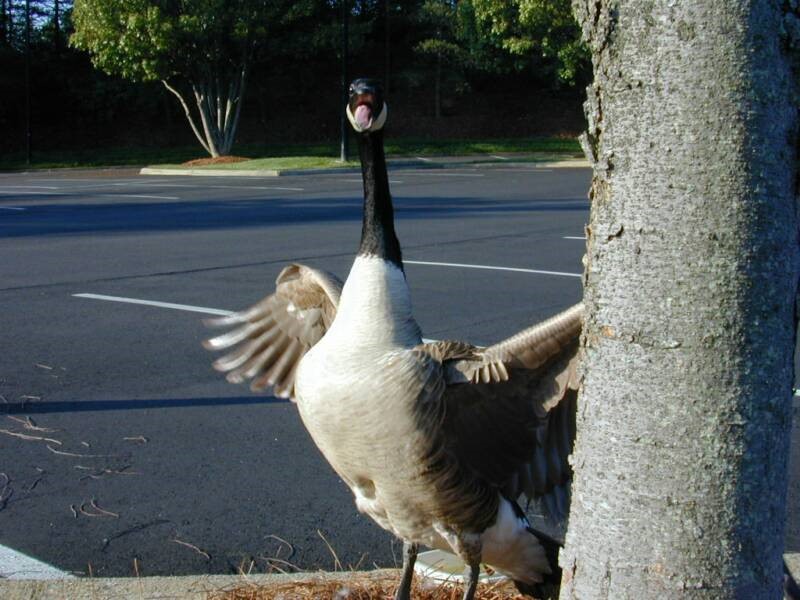
To listen to today’s reflection as a podcast, click here
Be afraid. Be very afraid.
At least, that’s how your local Canada goose wants you to feel.
First things first: that beast with the long black neck and white “chinstrap” – the bird that may be trying to scare you out of a neighborhood parking lot – is a Canada goose, not a Canadian goose. It would be Canadian only if it has a valid passport representing our neighbors to the north.
It’s hard to believe, but Canada geese were almost on the endangered species list 100 years ago.
Aggressively hunted for their delicious lean meat (think “Christmas goose”), they even had to be re-introduced to the state of Ohio in 1956.
Twenty mated pairs of geese were released into the Buckeye State in the hope they might survive and thrive. That they did. Today naturalists estimate there are more than a half million Canada geese that call Ohio home, and millions more have settled in across North America.
In many respects, these birds are endearing. With their long necks and massive wing spans, they are classic symbols of “wilderness wildness.” They mate for life – which is why it tugs at one’s heart to see a solo bird that has presumably lost its partner. Their babies (called “goslings”) are capable of swimming just 24 hours after hatching.
Older Americans associate Canada geese with magnificent V formations heading south every fall, then heading back north in late winter and early spring.
But such flyovers are becoming less and less common. What’s happening?
The simple truth is that it’s become all too easy for geese to “winter over” in the North instead of packing up and heading for the Gulf. Humans have conveniently fashioned thousands of retention ponds in subdivisions and business parks. The food is plentiful and the predators are few. No wonder Canada geese have begun to act as if they own the place.
And it doesn’t take much to push their territorial buttons.
When threatened – especially if a goose thinks you’re getting too close to its nest or goslings – it might flap its wings, lower its head, stick out its tongue a la Gene Simmons of KISS, make hissing sounds, and, when all else fails, charge.
Geese aren’t particularly dangerous. But as they settle into their new year-round habitats – rudely trampling the grass and leaving behind generous piles of droppings – they can undeniably be annoying.
That’s what can happen when wild animals become semi-domesticated.
And that’s something that can happen to us, too.
Followers of Jesus are supposed to be wild. “Follow me” was never intended to be a promise of comfort. It’s a summons to engage a world where evil and injustice really exist.
We’re called to advocate for the poor, the powerless, and those on the margins. We’re to invest our resources in world-changing projects instead of easing ourselves into lifestyles that are all about us. God boldly beckons us to risk our reputations, our social standing, and even our safety for the sake of God’s kingdom. And at every step our call is not to judge others, but to love courageously.
But it’s easy to grow deaf to the call of the wild.
We start hanging out at churches that protect the status quo instead of challenging it. We write checks to help others go change the world instead of asking God to show us how we can change the parts of the world where we already live and work.
The Good Life becomes safe, easy, and semi-domesticated – a religiously motivated effort to avoid ruffling anyone’s feathers. As one bishop lamented, “Everywhere the apostle Paul went, people rioted. Everywhere I go, they serve tea.”
It’s time to reclaim our natural state.
As frontline ambassadors for God’s purposes in the world, we’re supposed to be wild.
Which means, as we walk gingerly past any nesting Canada geese today, we might even consider dusting off that old bumper sticker:
Honk if You Love Jesus.
